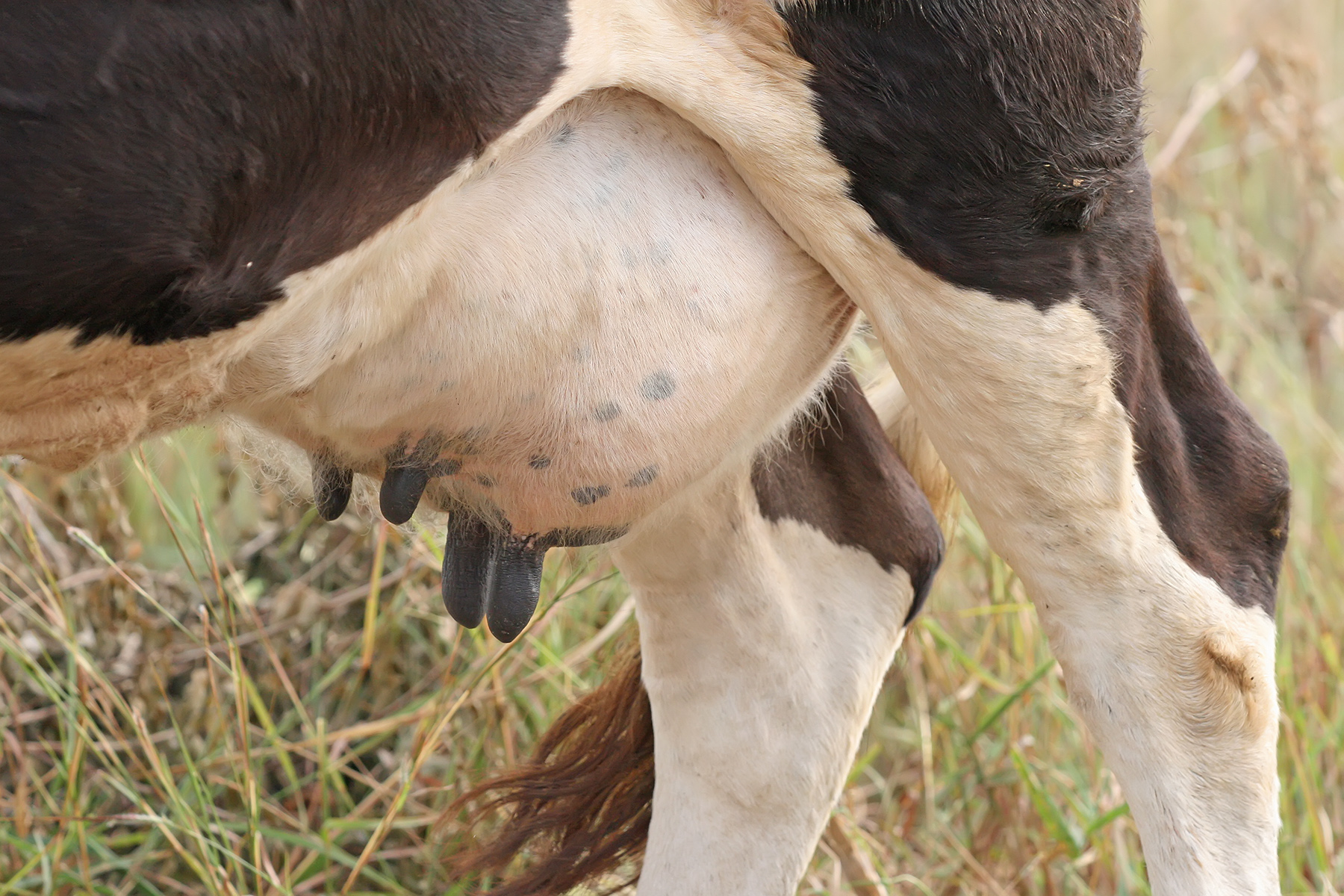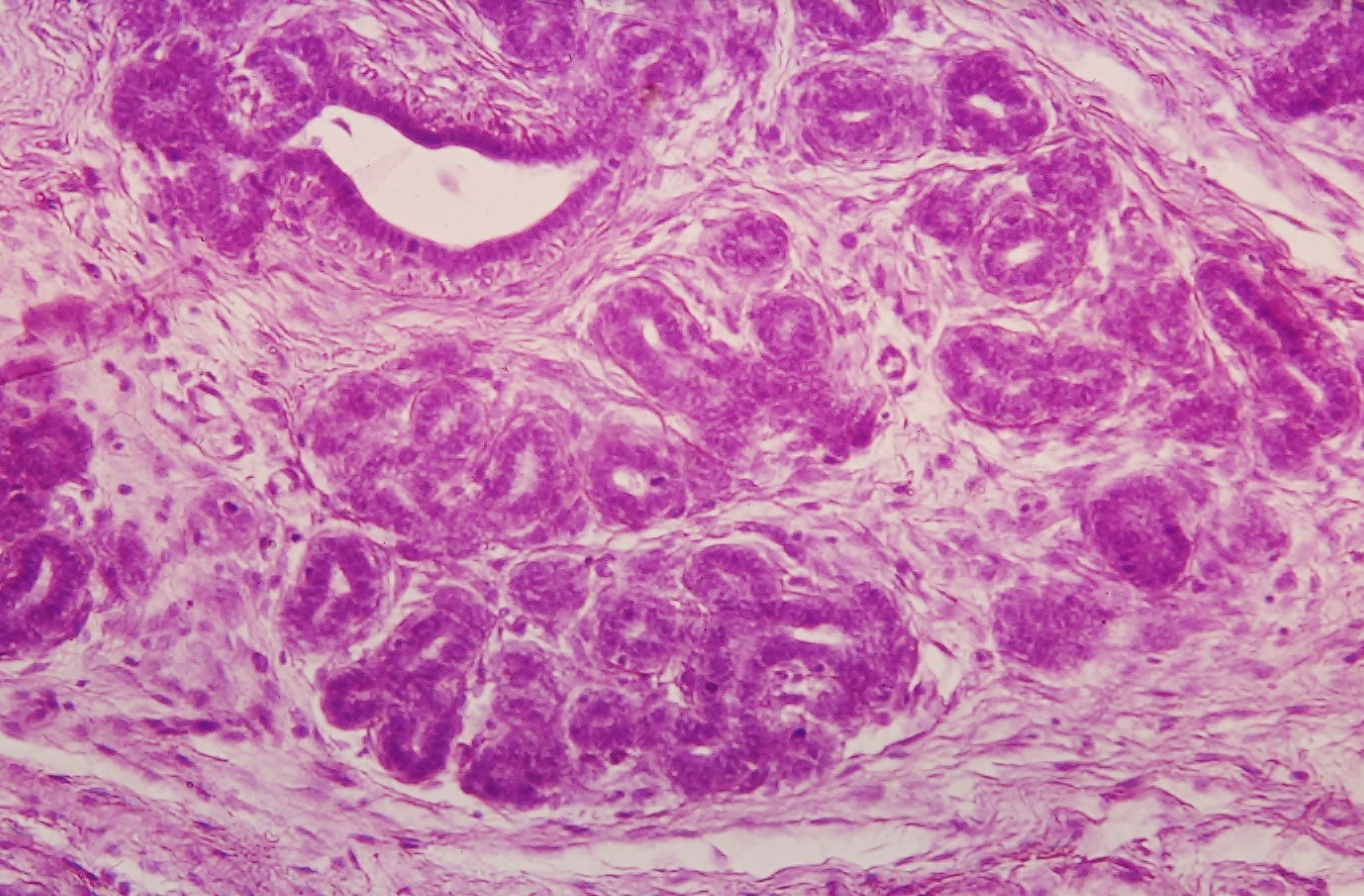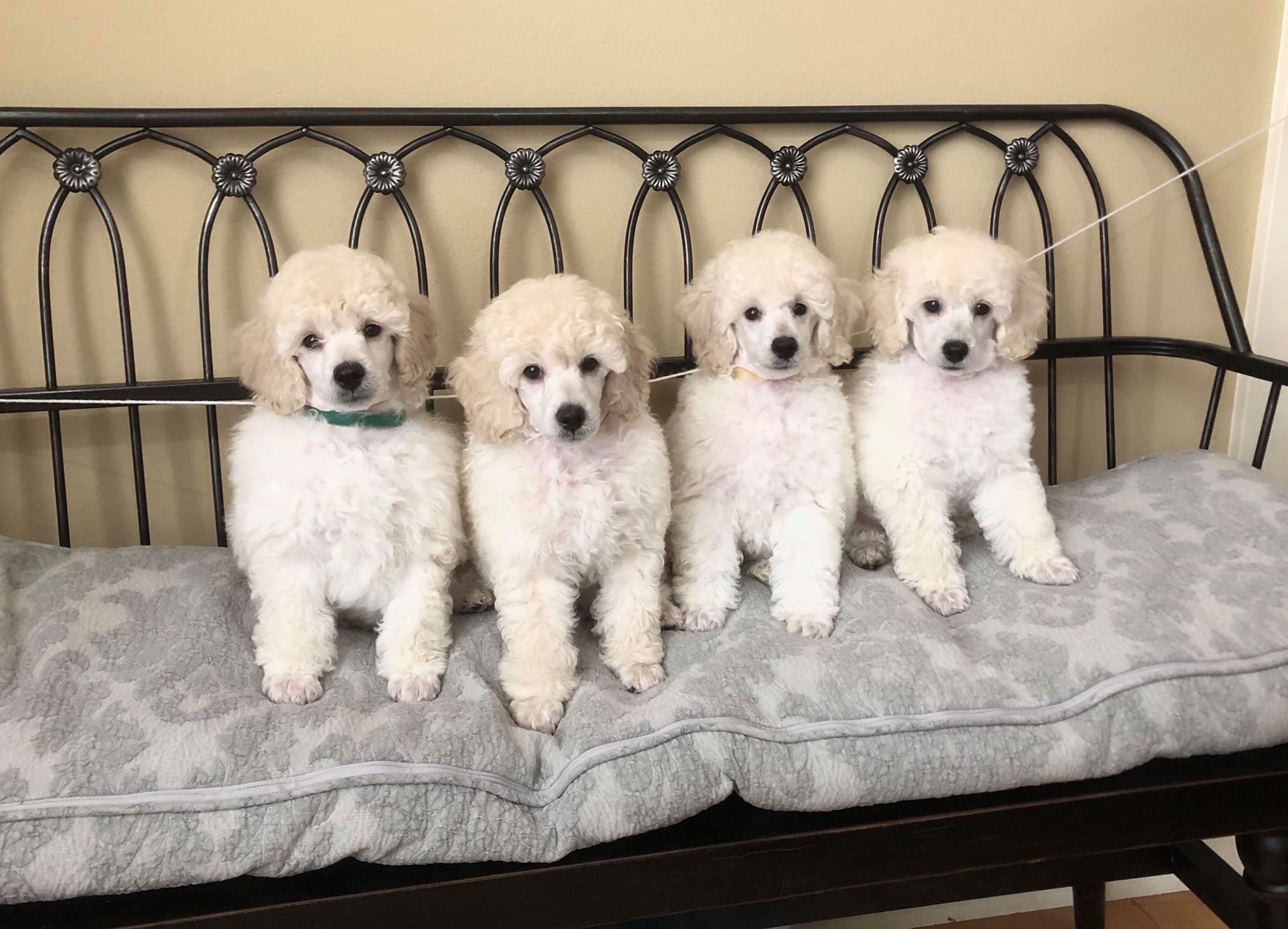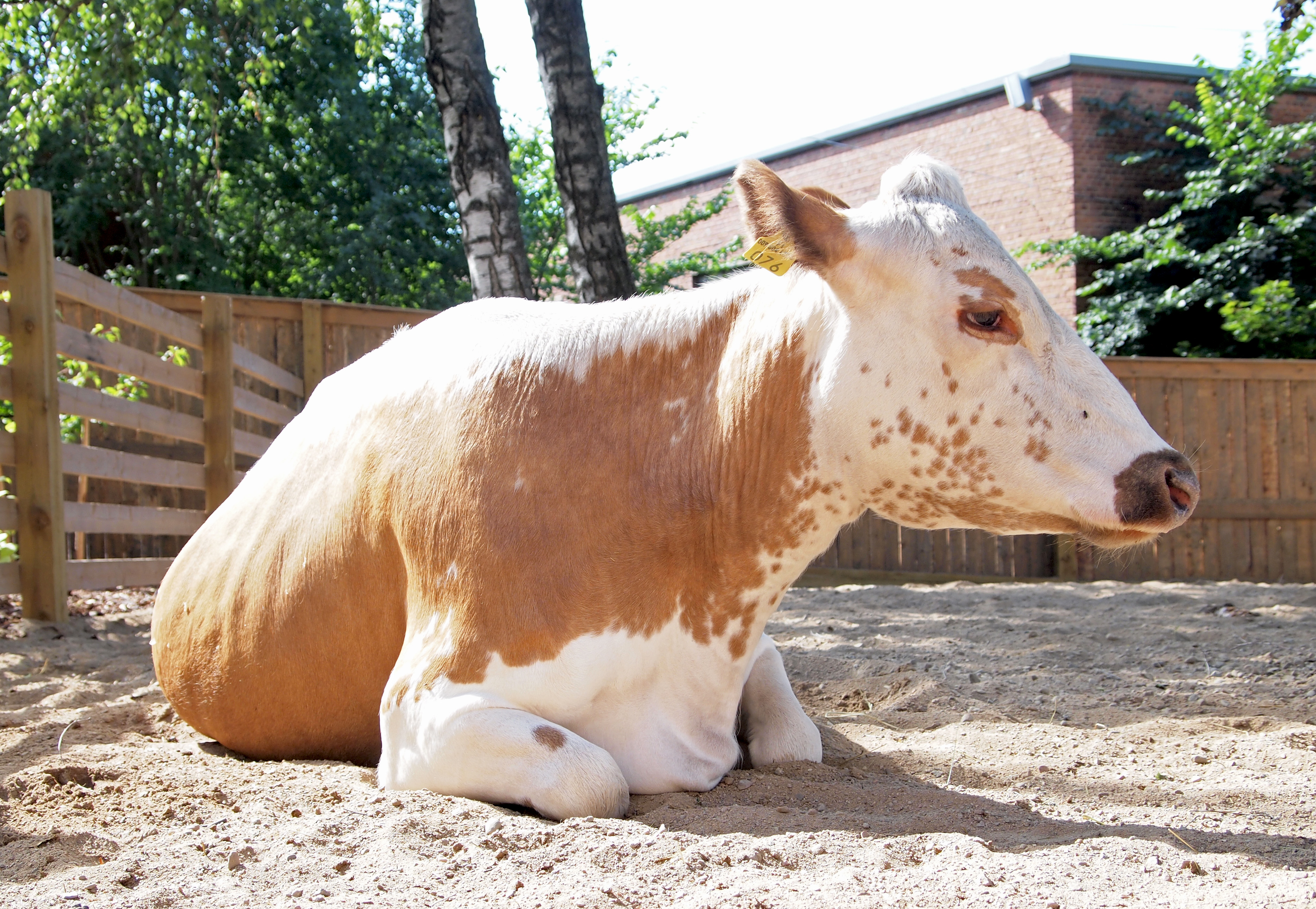|
Teat
A teat is the projection from the mammary glands of mammals from which milk flows or is ejected for the purpose of feeding young. In many mammals the teat projects from the udder. The number of teats varies by mammalian species and often corresponds to the average litter size for that animal. In some cases, the teats of female animals are milked for the purpose of human consumption. The quality of some domesticated animals is determined by the establishment of desired characteristics, such as teat size and placement. Number and positioning in animals The number and positioning of mammary glands and teats varies widely among mammals. The protruding teats and accompanying glands can be located anywhere along the two milk lines. In general most mammals develop mammary glands in pairs along these lines, with a number approximating the number of young typically birthed at a time. The number of teats varies from 2 (in elephants and anthropoids) to 18 (in pigs). Marsupials usually h ... [...More Info...] [...Related Items...] OR: [Wikipedia] [Google] [Baidu] |
Milking
Milking is the act of removing milk from the mammary glands of cattle, water buffalo, humans, goats, sheep, and, more rarely, camels, horses and donkeys. Milking may be done by hand or by machine, and requires the animal to be currently or recently pregnant. The milker may refer either to the animal that produces the milk or the person who milks said animal. Hand milking Hand milking is performed by massaging and pulling down on the teats of the udder, squirting the milk into a bucket. Two main methods are used: *The top of the teat is pinched shut between finger and thumb, trapping milk in the lower part, which is then squeezed by the other fingers, squirting the milk out through the hole in the tip of the teat. *The top of the teat is pinched shut by the fingers and thumb, which are then slid down the teat, pushing the milk towards the bottom. Machine milking Most milking in the developed world is done using automatic milking, milking machines. Teat cups are attached to the ... [...More Info...] [...Related Items...] OR: [Wikipedia] [Google] [Baidu] |
Bovine Papillomavirus
Bovine papillomaviruses (BPV) are a paraphyletic group of DNA viruses of the subfamily ''Firstpapillomavirinae'' of ''Papillomaviridae'' that are common in cattle. All BPVs have a circular genome, circular double-stranded DNA genome. Infection causes warts (papillomas and fibropapillomas) of the skin and alimentary tract, and more rarely cancers of the alimentary tract and urinary bladder. They are also thought to cause the skin tumour equine sarcoid in horses and donkeys. BPVs have been used as a model for studying papillomavirus molecular biology and for dissecting the mechanisms by which this group of viruses cause cancer. Structure and genetic organisation Like other papillomaviruses, BPVs are small non-enveloped viruses with an icosahedral capsid around 50–60 nm in diameter. The capsid is formed of the L1 and L2 structural proteins, with the L1 C-terminus exposed. All BPVs have a circular genome, circular double-stranded DNA genome of 7.3–8.0 kb. The genetic organ ... [...More Info...] [...Related Items...] OR: [Wikipedia] [Google] [Baidu] |
Mammary Gland
A mammary gland is an exocrine gland in humans and other mammals that produces milk to feed young offspring. Mammals get their name from the Latin word ''mamma'', "breast". The mammary glands are arranged in organs such as the breasts in primates (for example, humans and chimpanzees), the udder in ruminants (for example, cows, goats, sheep, and deer), and the dugs of other animals (for example, dogs and cats). Lactorrhea, the occasional production of milk by the glands, can occur in any mammal, but in most mammals, lactation, the production of enough milk for nursing, occurs only in phenotypic females who have gestated in recent months or years. It is directed by hormonal guidance from sex steroids. In a few mammalian species, male lactation can occur. With humans, male lactation can occur only under specific circumstances. Mammals are divided into 3 groups: prototherians, metatherians, and eutherians. In the case of prototherians, both males and females have functional mamm ... [...More Info...] [...Related Items...] OR: [Wikipedia] [Google] [Baidu] |
Marsupial
Marsupials are any members of the mammalian infraclass Marsupialia. All extant marsupials are endemic to Australasia, Wallacea and the Americas. A distinctive characteristic common to most of these species is that the young are carried in a pouch. Marsupials include opossums, Tasmanian devils, kangaroos, koalas, wombats, wallabies, bandicoots, and the extinct thylacine. Marsupials represent the clade originating from the last common ancestor of extant metatherians, the group containing all mammals more closely related to marsupials than to placentals. They give birth to relatively undeveloped young that often reside in a pouch located on their mothers' abdomen for a certain amount of time. Close to 70% of the 334 extant species occur on the Australian continent (the mainland, Tasmania, New Guinea and nearby islands). The remaining 30% are found in the Americas—primarily in South America, thirteen in Central America, and one species, the Virginia opossum, in North America, n ... [...More Info...] [...Related Items...] OR: [Wikipedia] [Google] [Baidu] |
Mammal
Mammals () are a group of vertebrate animals constituting the class Mammalia (), characterized by the presence of mammary glands which in females produce milk for feeding (nursing) their young, a neocortex (a region of the brain), fur or hair, and three middle ear bones. These characteristics distinguish them from reptiles (including birds) from which they diverged in the Carboniferous, over 300 million years ago. Around 6,400 extant species of mammals have been described divided into 29 orders. The largest orders, in terms of number of species, are the rodents, bats, and Eulipotyphla (hedgehogs, moles, shrews, and others). The next three are the Primates (including humans, apes, monkeys, and others), the Artiodactyla ( cetaceans and even-toed ungulates), and the Carnivora (cats, dogs, seals, and others). In terms of cladistics, which reflects evolutionary history, mammals are the only living members of the Synapsida (synapsids); this clade, together with Saur ... [...More Info...] [...Related Items...] OR: [Wikipedia] [Google] [Baidu] |
Goat
The goat or domestic goat (''Capra hircus'') is a domesticated species of goat-antelope typically kept as livestock. It was domesticated from the wild goat (''C. aegagrus'') of Southwest Asia and Eastern Europe. The goat is a member of the animal family Bovidae and the tribe Caprini, meaning it is closely related to the sheep. There are over 300 distinct breeds of goat.Hirst, K. Kris"The History of the Domestication of Goats".''About.com''. Accessed August 18, 2008. It is one of the oldest domesticated species of animal, according to archaeological evidence that its earliest domestication occurred in Iran at 10,000 calibrated calendar years ago. Goats have been used for milk, meat, fur, and skins across much of the world. Milk from goats is often turned into goat cheese. Female goats are referred to as ''does'' or ''nannies'', intact males are called ''bucks'' or ''billies'', and juvenile goats of both sexes are called ''kids''. Castrated males are called ''wethers''. Whil ... [...More Info...] [...Related Items...] OR: [Wikipedia] [Google] [Baidu] |
Litter (animal)
A litter is the live birth of multiple offspring at one time in animals from the same mother and usually from one set of parents, particularly from three to eight offspring. The word is most often used for the offspring of mammals, but can be used for any animal that gives birth to multiple young. In comparison, a group of eggs and the offspring that hatch from them are frequently called a clutch, while young birds are often called a brood. Animals from the same litter are referred to as litter-mates. Litter A species' average litter size is generally equal to one half of the number of teats and the maximum litter size generally matches the number of teats. Not all species abide by this rule, however. The naked mole rat, for example, averages roughly eleven young per birth and has eleven teats. Animals frequently display grouping behavior in herds, swarms, flocks, or colonies, and these multiple births derive similar advantages. A litter offers some protection from predation, not ... [...More Info...] [...Related Items...] OR: [Wikipedia] [Google] [Baidu] |
Cow Udders02
Cattle (''Bos taurus'') are large, domesticated, cloven-hooved, herbivores. They are a prominent modern member of the subfamily Bovinae and the most widespread species of the genus ''Bos''. Adult females are referred to as cows and adult males are referred to as bulls. Cattle are commonly raised as livestock for meat (beef or veal, see beef cattle), for milk (see dairy cattle), and for hides, which are used to make leather. They are used as riding animals and draft animals ( oxen or bullocks, which pull carts, plows and other implements). Another product of cattle is their dung, which can be used to create manure or fuel. In some regions, such as parts of India, cattle have significant religious significance. Cattle, mostly small breeds such as the Miniature Zebu, are also kept as pets. Different types of cattle are common to different geographic areas. Taurine cattle are found primarily in Europe and temperate areas of Asia, the Americas, and Australia. Zebus (also cal ... [...More Info...] [...Related Items...] OR: [Wikipedia] [Google] [Baidu] |
Milk
Milk is a white liquid food produced by the mammary glands of mammals. It is the primary source of nutrition for young mammals (including breastfed human infants) before they are able to digestion, digest solid food. Immune factors and immune-modulating components in milk contribute to milk immunity. Early-lactation milk, which is called colostrum, contains antibody, antibodies that strengthen the immune system, and thus reduces the risk of many diseases. Milk contains many nutrients, including protein and lactose. As an agricultural product, dairy milk is Milking, collected from farm animals. In 2011, Dairy farming, dairy farms produced around of milk from 260 million dairy cows. India is the world's largest producer of milk and the leading exporter of skimmed milk powder, but it exports few other milk products. Because there is an ever-increasing demand for dairy products within India, it could eventually become a net importer of dairy products. New Zealand, Germany and the ... [...More Info...] [...Related Items...] OR: [Wikipedia] [Google] [Baidu] |
Udder
An udder is an organ formed of two or four mammary glands on the females of dairy animals and ruminants such as cattle, goats, and sheep. An udder is equivalent to the breast in primates and elephantine pachyderms. The udder is a single mass hanging beneath the animal, consisting of pairs of mammary glands with protruding teats. In cattle and camels, there are normally two pairs, in sheep, goats and deer, there is one pair, and in some animals, there are many pairs. In animals with udders, the mammary glands develop on the milk line near the groin, and mammary glands that develop on the chest (such as in humans and apes and elephants) are generally referred to as breasts. Udder care and hygiene in cows is important in milking, aiding uninterrupted and untainted milk production, and preventing mastitis. Products exist to soothe the chapped skin of the udder. This helps prevent bacterial infection, and reduces irritation during milking by the cups, and so the cow is less likely to ... [...More Info...] [...Related Items...] OR: [Wikipedia] [Google] [Baidu] |
Cattle
Cattle (''Bos taurus'') are large, domesticated, cloven-hooved, herbivores. They are a prominent modern member of the subfamily Bovinae and the most widespread species of the genus ''Bos''. Adult females are referred to as cows and adult males are referred to as bulls. Cattle are commonly raised as livestock for meat (beef or veal, see beef cattle), for milk (see dairy cattle), and for hides, which are used to make leather. They are used as riding animals and draft animals ( oxen or bullocks, which pull carts, plows and other implements). Another product of cattle is their dung, which can be used to create manure or fuel. In some regions, such as parts of India, cattle have significant religious significance. Cattle, mostly small breeds such as the Miniature Zebu, are also kept as pets. Different types of cattle are common to different geographic areas. Taurine cattle are found primarily in Europe and temperate areas of Asia, the Americas, and Australia. Zebus (also ... [...More Info...] [...Related Items...] OR: [Wikipedia] [Google] [Baidu] |
Pseudocowpox
Pseudocowpox is a disease caused by the Paravaccinia virus or Pseudocowpox virus, a virus of the family ''Poxviridae'' and the genus ''Parapoxvirus''. Humans can contract the virus from contact with livestock infected with Bovine papular stomatitis and the disease is common among ranchers, milkers, and veterinarians. Infection in humans will present with fever, fatigue, and lesion on the skin. Signs and symptoms Paravaccinia virus presents itself with blisters, nodules, or lesions about 4 mm in diameter, typically in the area that has made contact with livestock that is infected with bovine papular stomatitis. Lesions may begin forming as late as three weeks after contact has been made with an infected animal. In rare cases, lesions may be seen systemic. General signs of infection are also common, such as fever and fatigue. Infected livestock may present with blisters or lesions on their udders or snout. Often, however, infected livestock show little to no symptoms. Mechan ... [...More Info...] [...Related Items...] OR: [Wikipedia] [Google] [Baidu] |




_(white_background).jpg)



.jpg)

